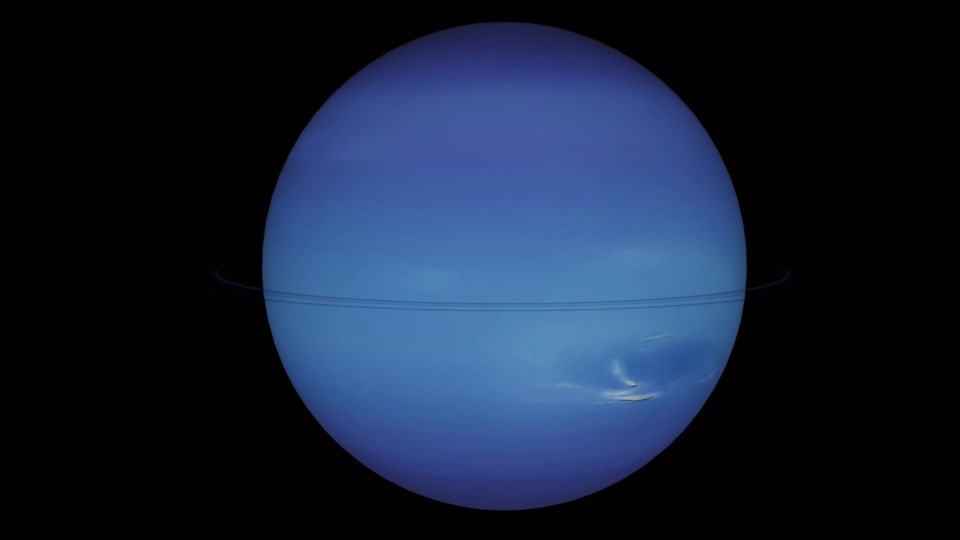The moon is just a few days from new phase, so just a thin sliver and too close to the sun for viewing. New moon is Aug. 4. The following day sees Venus 1.7 degrees south of the very thin sliver of the crescent moon, and Aug. 9, Luna reaches apogee of 495,207 kilometres. Aug. 10 has Spica 0.7 degrees south; Aug. 14, Antares is 0.004 degrees north; and the moon is full Aug. 19.
By Aug. 21, Saturn snuggles up only 0.5 degrees south of our satellite, which achieves perigee of 360,196 km. Later that evening, Neptune is 0.7 degrees south. These four close approaches are all occultations, but in distant parts of the world, not visible from North America.
The moon is in the Pleiades Aug. 25, six degrees south of Jupiter and five degrees south of Mars Aug. 27, and 1.7 degrees south of Pollux Aug. 29.
Mercury in the western evening sky rapidly moves in front of the sun, not seen again until month's end.
Venus is making an entrance in the western sky, so named the Evening Star, but the angle of the ecliptic makes viewing difficult. The bright planet sets at almost the same time as the sun.
Mars, in Taurus, rises around midnight, about five degrees north of Aldebaran, with Jupiter in conjunction Aug. 14.
Jupiter, among the stars of Taurus in the very early morning sky, has double-shadow and transit events this month, Aug. 3, 7, 9, 10, 14, 17, 21 and 25. Watch also for the fine conjunction with Mars Aug. 14.
Saturn rises mid-evening and crosses the sky all night in the constellation Aquarius. The waning gibbous moon joins the Ringed Planet Aug. 20.
Uranus rises around midnight in Taurus. The Pleiades are just off to the northeast. The moon is just four degrees north of the blue-green gas planet Aug. 25.
Neptune is in Pisces, rising just before midnight and crossing the sky until dawn obliterates it.
The Perseid meteors peak the night of Aug. 12. That’s when Earth passes through the cloud of tiny particles left behind by Comet 109P/Swift-Tuttle in its many passes by the sun. It has been confirmed that the earliest sighting was over 2,100 years ago, returning approximately every 130 years. It is next due to appear in 2126.
James Edgar has had an interest in the night sky all his life. He joined the Royal Astronomical Society of Canada in 2000, was national president for two terms, is now the editor of the Observer’s Handbook, and production manager of the bi-monthly RASC Journal. The IAU named asteroid 1995 XC5 “(22421) Jamesedgar” in his honour and in 2021 he was awarded a Fellowship of the RASC.



